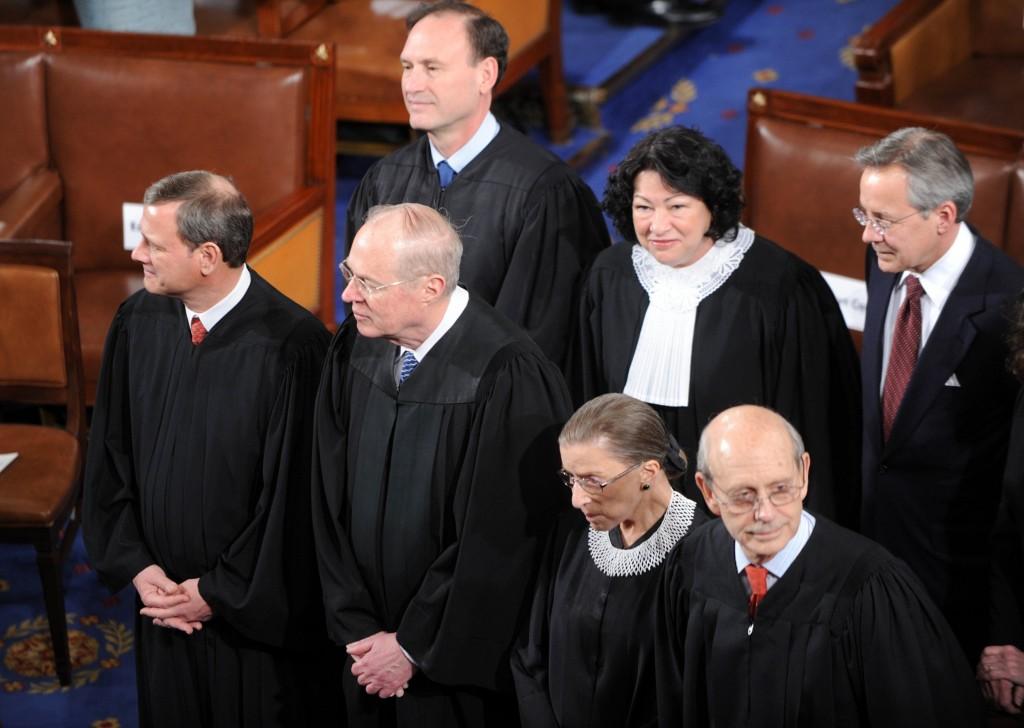Justice Stevens’ Retirement Raises Questions About Court Conservatism
July 10, 2011

Published: May 5, 2010
Is a Catholic court a conservative court? With the April 9 announcement by Supreme Court justice John Paul Stevens that he will be retiring at the end of the 2010 term, America’s highest court will be left without its liberal leader and only Protestant. In addition to Stevens, six Catholic and two Jewish justices comprise the Court, with five of those six Catholics —Chief Justice John Roberts and associate justices Antonin Scalia, Clarence Thomas, Samuel Alito and swing vote Anthony Kennedy—forming the Court’s conservative wing.
The influx of Catholics on the Court has coincided with a renewed conservatism, including a 2007 ruling that upheld a federal ban on partial birth abortion and a recent relaxation of corporate campaign finance laws, both of which were authorized by Kennedy and joined by Roberts, Scalia, and Alito. Still, there is no consensus among religious and legal experts that the Court’s religious make-up influences its decisions.
As President Barack Obama prepares to nominate a successor for Justice Stevens, a question arises: Should a judge’s personal religious identity be considered in the Supreme Court nomination and confirmation process?
“Race, gender, ethnicity, and religion are all given some political consideration when making appointments, in spite of what politicians may say,” said Tom De Luca, professor of political science at Fordham University. “It would be misleading to simply say Catholic judges have historically been more conservative as if that were caused somehow by their being Catholic.
“While five of the current six Catholic justices are clearly very conservative, this more reflects when they were appointed and by whom – Reagan, Bush, Bush the younger—than the fact they are Catholic. While race, ethnicity, and religion were all considered in making these appointments, these men—Scalia, Kennedy, Thomas, Roberts, Alito—would not have been appointed if they were not very conservative.”
De Luca also noted that a Justice’s religion is not an automatic signifier of his or her political ideology.
“[Justice] Frank Murphy was a liberal who decried the internment of Japanese Americans during World War II in the Korematsu v. United States case, and William Brennan, another Catholic, was one of the most liberal members of the court from the late 1950s until 1990,” De Luca said.
Efforts to strike a religious balance on the bench must be considered in light of similar instances in which race or gender was considered in the nomination process.
Fordham University Law School professor Russell Pearce, who holds the Edward & Marilyn Bellet Chair in Legal Ethics, Morality and Religion, said, “We do know, or at least we believe that the President has taken certain kinds of identities into account like race… Even that gets tricky because the ideology of legal profession is one of neutrality that says all judges are the same. If you admit that any form of identity changes how you might make a legal decision, then you violate this dominate paradigm.”
President Obama’s first Supreme Court appointment, Justice Sonya Sotomayor, was appointed in 2009, though not without controversy. Remarks she made in 2001 referred to the positive influence her race and gender had on her jurisprudence—an admission of subjectivity that drew criticism from some Republicans. Sotomayor is the sixth Catholic on the bench, though her record is considerably liberal.
The idea of Protestants being underrepresented on the Court is also a new concern, given that throughout the Court’s history, a majority of the Justices have been Protestant white men.
“Approximately half of America is Protestant,” said Pearce. “From the point of view of addressing underrepresentation, one, we actually generally don’t think of religious identity at all. We focus on race. When we refer to religious identity, we think of the most underrepresented identity, and that is Islam. And Protestantism we associate historically as part of larger dominant political culture.”
Pearce also noted that there are unfortunate examples of the Senate negatively interpreting a nominee’s religion, as was the case with Louis Brandeis, who in 1916 became the first Jewish Supreme Court justice despite concerns over his faith.
Despite some historical precedents and the potential lack of Protestants on the high court, Margaret O’Brien Steinfels, co-director of Fordham’s Center on Religion and Culture, doesn’t predict religion will be an acknowledged factor in the nomination process.
“I don’t think [religion] will play a public role,” Steinfels said. “For one, it’s probably unconstitutional… Religion doesn’t make a large difference. It can be a stand in for political or social proclivities.”
But Steinfels also believes religious identity can never be completely ignored when considering Supreme Court candidates.
“I don’t think religion could be or should be marginalized, because it remains such and important part of identity,” Steinfels said. “But even if religion were more central, I’m not sure what it would tell you. I don’t think it will be determinative.”
Little concern has been raised over the religious identity of the potential nominees, including Solicitor General Elena Kagan and federal appeals Judge Sidney Thomas, both of whom were interviewed at the White House last week. Kagan’s gender and Thomas’s non-Ivy League pedigree—he graduated from the University of Montana School of Law in 1978—will likely draw more attention than either candidate’s religion.









